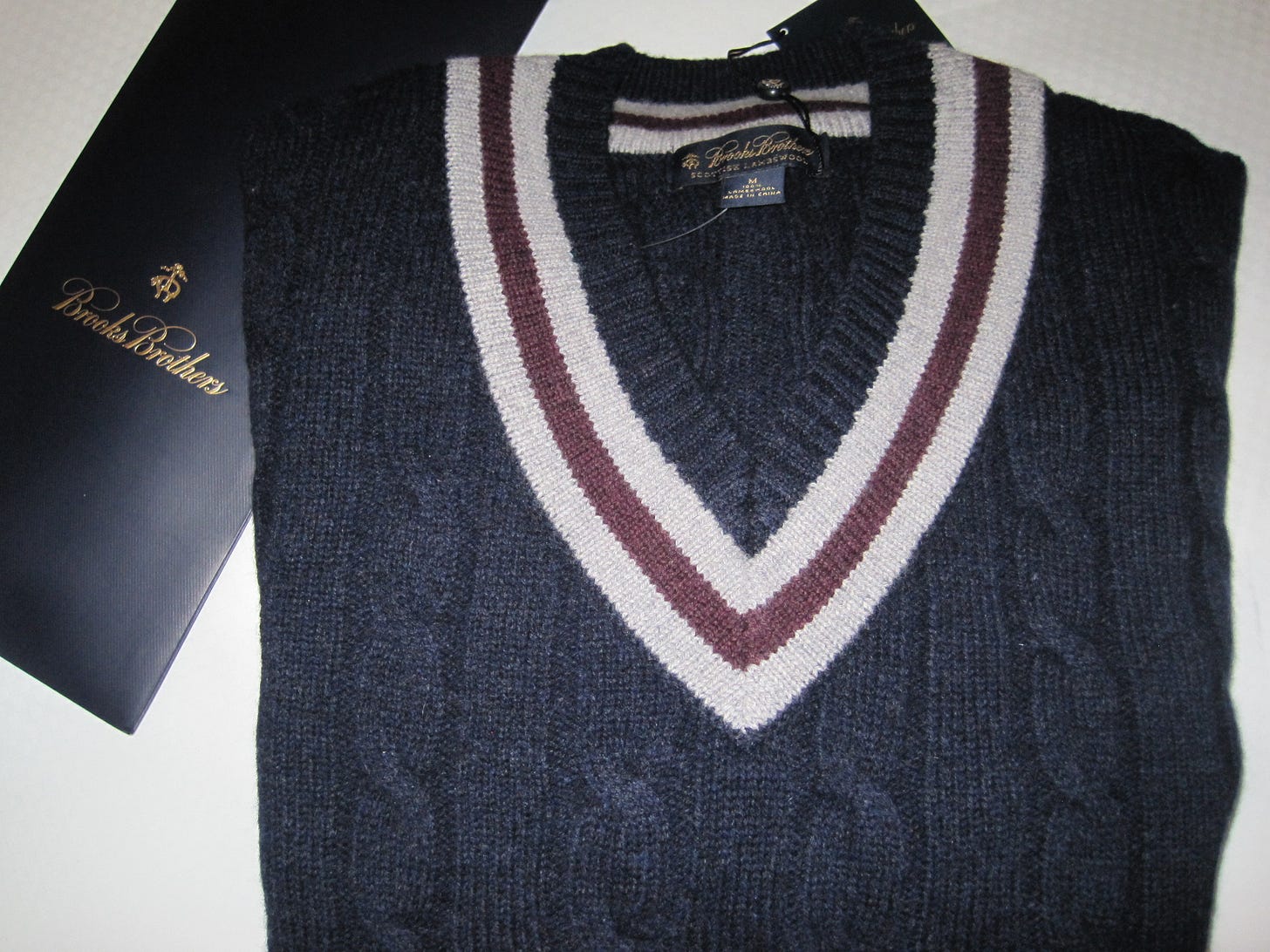With the Wimbledon Championships winding down this weekend, let’s turn a sartorial eye to the world of tennis.
Tennis players of the modern age wear sports gear, designed to be light and move with the player.
Looking back at the early 20th century, though, we find people dressing for tennis as if they were using the dining facilities of the country club where they played.
These vintage advertising illustrations from the 1930s by Laurence Fellows, Leslie Saalburg, and L. Hurd show just how dapper the players were.
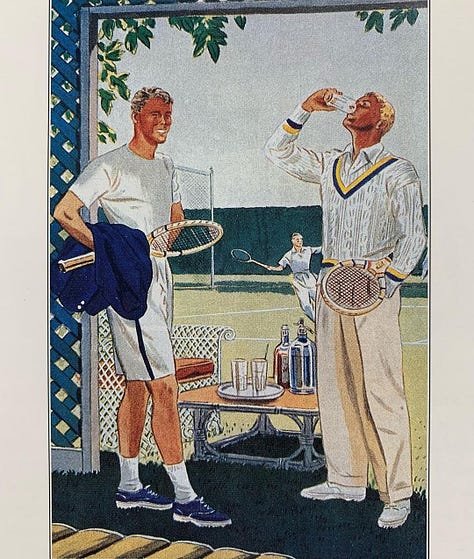
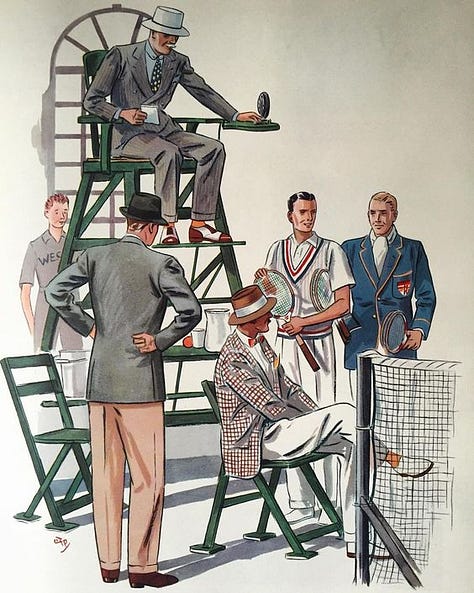
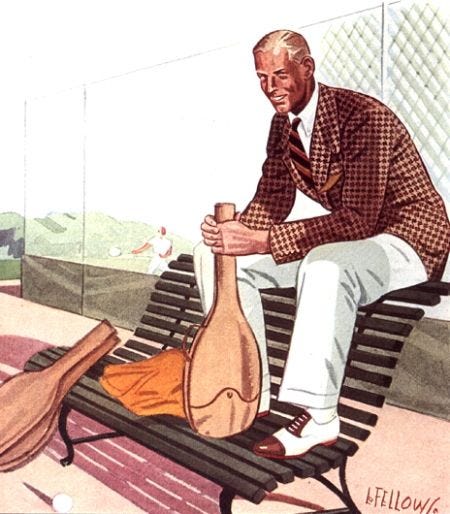
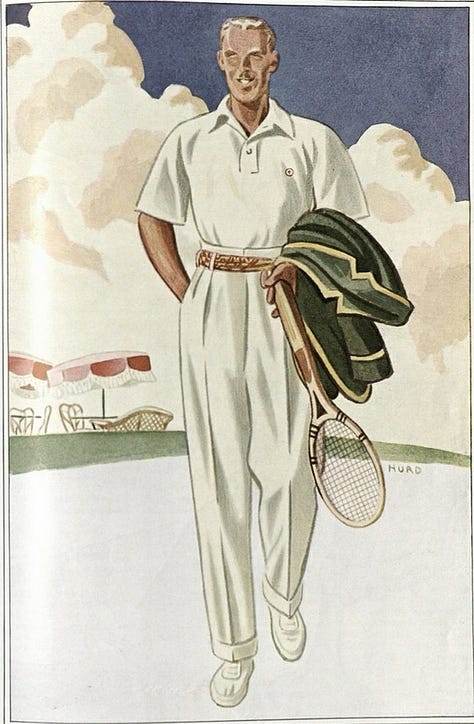
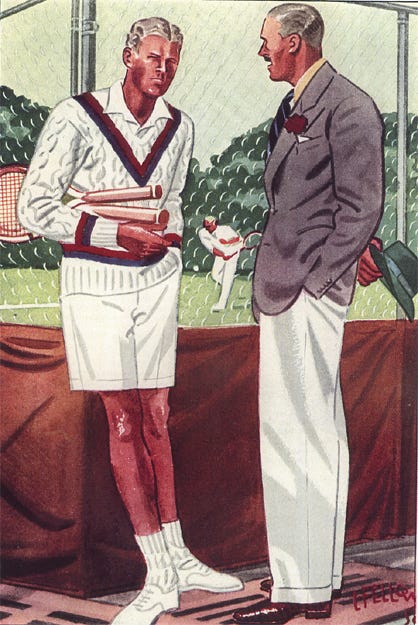

One of the pieces of clothing you see over and over from this era is the tennis sweater. It’s a staple of many wardrobes even today, although for non-sports purposes.
Brooks Brothers was one of the places you could always find it — and you still can.
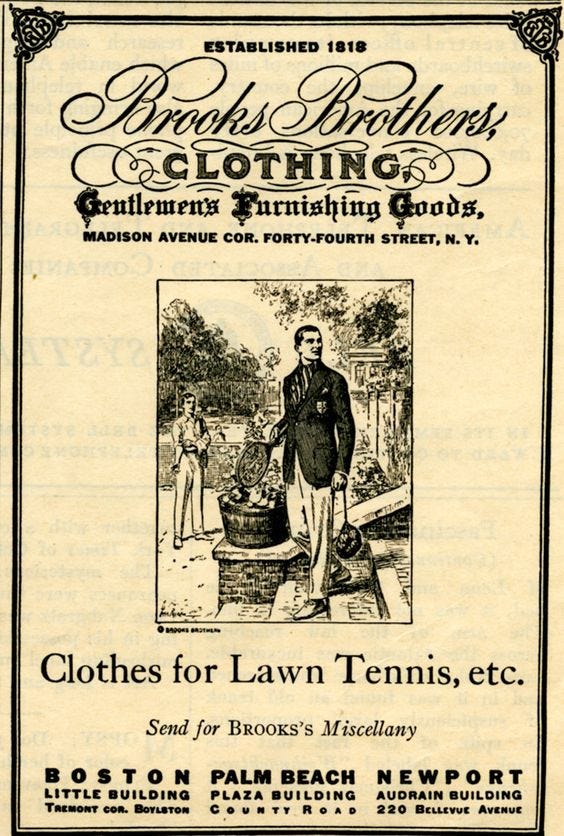

A History of the Tennis Sweater
How did this particular piece of clothing come to be associated with tennis?
According to Debra Wise in a 1987 column for GQ,
“The original de rigueur tennis outfit consisted of white flannel trousers, a white cotton broadcloth or Oxford-cloth shirt with rolled-up sleeves, white socks and rubber-soled shoes. And off the court, in the cool of the country-club twilight, the sportsman wore a cream-colored cable-knit wool pullover, with his club colors set in around the deep V-neck and the waist.”
This didn’t begin around the tennis courts, though.
“Such sweaters have been a basic of the sporting wardrobe since Foster & Co., a London clothier, began selling them in 1840. The tennis sweater actually predated the game by several decades, originating as part of the cricket uniform. In fact, the entire tennis-whites ensemble was a cricket uniform minus the cap.”
How did the cricket sweater make the jump to tennis?
“The story begins in Godalming, a Surrey village that has been a knitting center since the sixteenth century. In 1907, William Paine opened a small tailoring shop on the village’s main street, but it seems that his seamstresses had other designs: They found some old hand-frame knitting machines in the shop's back room and were soon turning out variations on the cable- and bar-stitched cricket sweater and selling them to upper-class locals who had no connection to the game. The sweaters became so popular that by the time Paine was ready to turn the business over to his son Alan in the Thirties, the company was dealing exclusively in knitwear.”
As with many sartorial choices in those days, this one involved the Prince of Wales. The prince had several sweaters (I beg your pardon—jumpers) commissioned in all of his regimental colors in the 1920s. Once he was spotted wearing them, the trend took off.
Wise again:
“By the Iate Twenties, the sweater had made its voyage from Wimbledon to New port and had become a favorite of American tennis great Bill Tilden. who was no small influence on the fashion of the sport. The sweater remained popular throughout the Thirties and Forties, the heyday of tennis whites. Its appeal was inherent — the sweater was crisp- and sporty-looking, comfortable and warm, and it carried an unmistakable country club appeal, even for those who didn’t know a clay court from grass.”
Even today, the sweater is popular and is available in a variety of colors as well as materials. I picked one up from Brooks Brothers about a decade ago in lambswool (most definitely not suitable for tennis weather).
It makes me wonder whether things were cooler during tennis season a century ago.
They certainly wore fancier socks.
Anyway, having a tennis sweater as part of your wardrobe is Classy AF.










